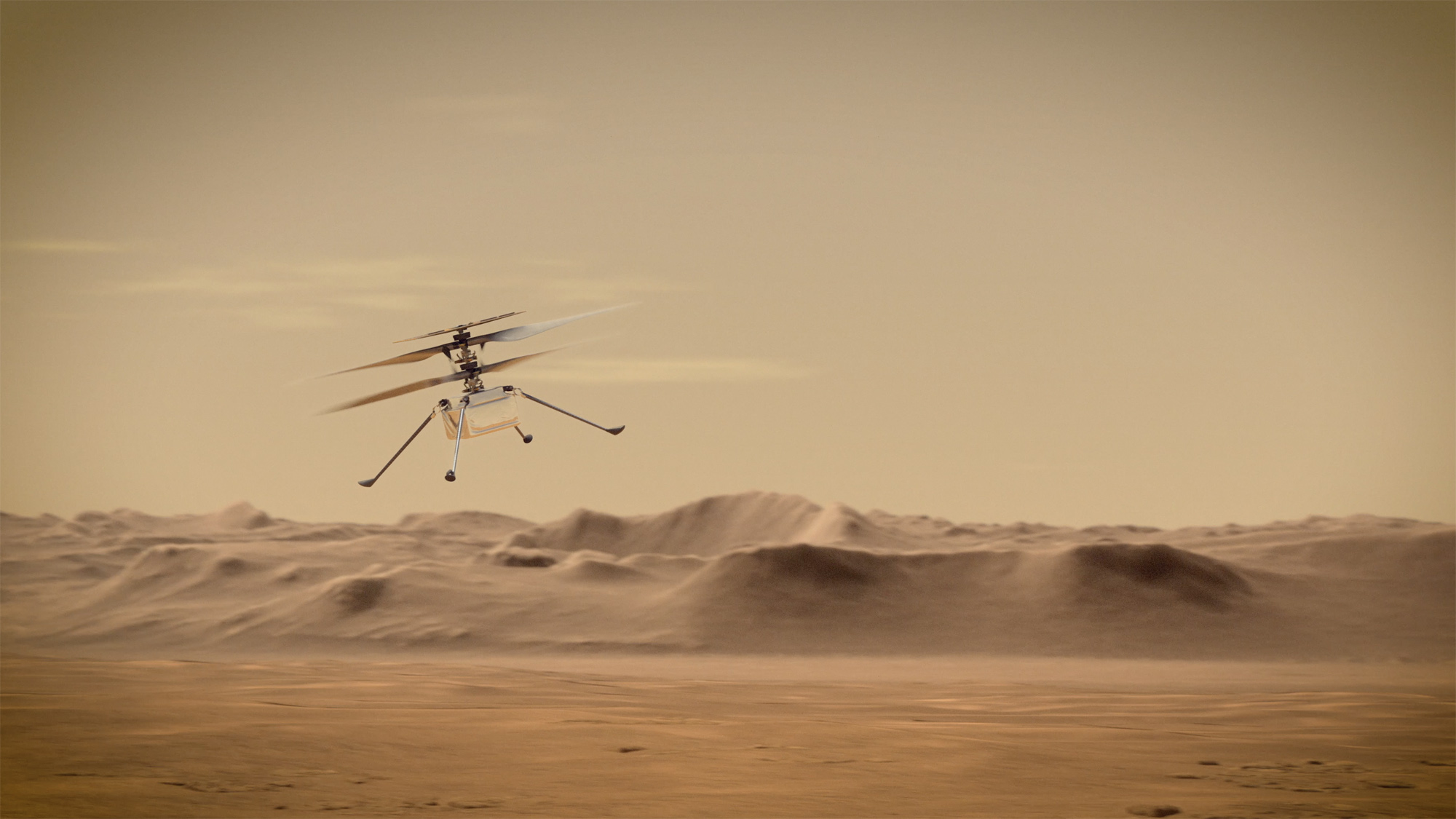The Mars helicopter on NASA's Perseverance rover could fly in early April

The first-ever powered flights on Mars could be just a few weeks away.
The teams behind NASA's Perseverance rover and Ingenuity helicopter have chosen an airfield on the Red Planet for the 4-lb. (1.8 kilograms) chopper and are gearing up for flights in the near future.
"Ingenuity’s test flights are expected to begin no earlier than the first week of April," NASA officials wrote in a mission update on Wednesday (March 17). "The exact timing of the first flight will remain fluid as engineers work out details on the timeline for deployments and vehicle positioning of Perseverance and Ingenuity."
Related: NASA's Mars helicopter Ingenuity explained
Join our forums here to discuss the Perseverance rover on Mars. What do you hope finds?
NASA will give an update on the Ingenuity flight plan during a news conference next Tuesday (March 23) at 1:30 p.m. EDT (1730 GMT). You can watch it live here at Space.com, courtesy of NASA, or directly via the space agency.
Ingenuity is still tucked away in the belly of Perseverance, which landed inside the Red Planet's 28-mile-wide (45 kilometers) Jezero Crater on Feb. 18. After Perseverance reaches the chosen airfield, it will deploy Ingenuity onto the red dirt and drive about 330 feet (100 meters) away. The six-wheeled rover will then attempt to document the little chopper's flights using its Mastcam-Z camera suite and two microphones, mission team members have said.
Ingenuity carries a high-resolution camera but no science instruments; it's a technology demonstration designed to help pave the way for aerial exploration of Mars down the road. If Ingenuity's flights are successful, future Red Planet missions could commonly include helicopters, serving as scouts for rovers and/or gathering data on their own, NASA officials have said.
Breaking space news, the latest updates on rocket launches, skywatching events and more!
After helping Ingenuity get off the ground, Perseverance will begin focusing in earnest on its core mission. The rover will hunt for signs of ancient Mars life and collect dozens of samples, which a joint NASA-European Space Agency mission campaign will haul home to Earth, perhaps as early as 2031.
Ingenuity isn't the only technology demonstration that Perseverance carried to Mars. One of the rover's science instruments, called MOXIE ("Mars Oxygen In-Situ Resource Utilization Experiment"), is designed to generate pure oxygen from the Red Planet's thin, carbon dioxide-dominated atmosphere. Such gear, if scaled up, could help humanity get a foothold on Mars, NASA officials have said.
Mike Wall is the author of "Out There" (Grand Central Publishing, 2018; illustrated by Karl Tate), a book about the search for alien life. Follow him on Twitter @michaeldwall. Follow us on Twitter @Spacedotcom or Facebook.

Michael Wall is a Senior Space Writer with Space.com and joined the team in 2010. He primarily covers exoplanets, spaceflight and military space, but has been known to dabble in the space art beat. His book about the search for alien life, "Out There," was published on Nov. 13, 2018. Before becoming a science writer, Michael worked as a herpetologist and wildlife biologist. He has a Ph.D. in evolutionary biology from the University of Sydney, Australia, a bachelor's degree from the University of Arizona, and a graduate certificate in science writing from the University of California, Santa Cruz. To find out what his latest project is, you can follow Michael on Twitter.
